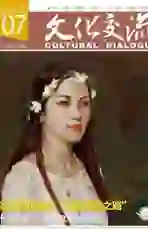采风,一场穿越千年的创作体验
2018-07-05陈淡宁
陈淡宁
5月7日到13日,浙江省摄影家协会组织了浙江摄影家浙东“唐诗之路”采风活动。采风团一行20人从杭州出发,前往新昌、天台、奉化,最后回到杭州。
“这次出去采风的都是浙江摄影界的精兵强将。”采风团领队、浙江省摄影家协会秘书长毛小芳向笔者介绍,每位参加采风的摄影家均自报创作选题,晚上有轮值讨论会,并邀请当地摄友旁听、参与讨论会,还和途经市县摄协会员举办讲座点评交流活动,“这既是一次影像理念的传播,又是一次跨界艺术家的驻留创作。”
“这次是摄影协会的集体采风,之后会有小分队继续深入创作。”毛小芳说,根据采风创作的情况,摄影协会已经将相应的成果展列入了计划:“设想在2019年举办浙江摄影家浙东唐诗之路影像文献展。”
那么在这些摄影家、艺术家眼中,这条唐诗之路究竟是什么模样呢?
孙敏(浙江省摄影家协会副主席):
手机拍摄,记录有时代特征的影像
孙敏告诉笔者,6天的采风中他大约拍了300多张照片:“全是手机拍的,我已经坚持了6年的手机创作了。”
孙敏给笔者展示了一些他所拍的照片,其中很大一部分是寺庙或者寺庙周边的景象,供果、柴房、寺庙一角懒洋洋的小猫、行走僧人飘起的僧袍……
“十多个人一起去创作,各自选择一个相对小一些的切入点。”孙敏说,“而我关注更多的是沿途的大小寺院。因为唐代诗人大多在寺院落脚,因此浙东一带的佛道文化更显‘唐韵。”
“在出发前,我提醒自己要‘忘记唐诗。”孙敏说。在他看来,走唐诗之路,不是用图片去解释唐诗,也不是简单图解岁月的变迁。“千年前的唐人,用‘诗这工具,来表达行走在这条路上的感受,而我们用‘摄影这工具,来表达行走在这条路上的感受。相同的是这条路,不同的是工具、时代和感受。这是文字与影像的穿梭,是跨越千年的对话。”
在孙敏拍摄的300多张照片里,有张照片让他觉得格外感慨。照片拍摄于奉化岩头村,一边是中式古建的飞檐,而另一边是设计十分现代的建筑,建筑外还有一个蜘蛛侠的雕像。
“时代的元素,千年的跨越,中西文化的融合,在那一个瞬间,体现得淋漓尽致。”孙敏说,“我总觉得那些花啊草啊水啊,一千年前跟现在也没有多大的区别,一千年后可能还是这样。而在今日的唐诗之路上,其实还有许多值得记录、具有时代特征的影像。”
“浙东唐诗之路是浙江的荣幸,也是浙江宝贵的历史文化遗产和精神财富。”孙敏说。
沈珂(浙江省摄影家协会主席团委员):
跋山涉水,感受古人游历浙东路程
这是一次目标明确的行动,与唐诗对话,与古人相遇,与山水相融,用身体感受历久弥新的“浙东唐诗之路”。“在我的经历中,像这样围绕特殊文脉探寻而身体力行的,应该是有生以来第一次。”沈珂说。
对于这“有生以来的第一次”,沈珂的评价是:值得期待。
“首先,这是一次不同年龄、不同风格的创作者相互融合碰撞的行程,是一次充满头脑激荡可能性的行程。”沈珂说,一路上,他与成员们同室论道,茶余饭后,讨论最多的是“有形”与“无形”的问题。
另一个值得期待的理由是“与唐诗对话、与古人邂逅,穿越千年时空,感受古人游历浙东、远涉山水的历程。游历之间,自然也探寻着城乡的面貌、世人的状态、文明的境遇,感怀时光蹉跎。当然,最动情处依然是老友重逢,令此行充满着快乐与想象”。
此次“唐诗之路”行走,对沈珂而言,思考最多的还是创作的基本问题。“在我看来,所谓创作,立意在前,转换在后。有感而心动,心动而生意,生意而作为,创形于无形,这应该就是创作的基本原理。此次采风,因‘诗而起,因‘路而行,如何融‘诗融‘路于影像,也即探寻于文脉而创形于表达,这是考验创作者的根本问题。”
这一路,沈珂一直在思考:是因诗而有路,还是因路而有诗?“延伸开来,古人因路而诗,抑或因诗而路,再或因会友而路,再有诗?恐怕现在谁都很难说清楚。文化传承与嬗变总有其各自的道理和原因。对我们而言,行走于此路,着重于对唐诗的理解,还是对山水的理解,抑或对人文世俗、生老病死的理解,在我看来,皆无不可,但重点还是行动。”
临行前,在采风团的微信群中,沈珂看到一位团员说过一句“創作看缘”,“这句话完整的意思应该是:观察靠脑,感受靠心,创作靠缘。创作是一次高级的烧脑运动,同时必须借助于身体力行。更重要的是,创作能否成功,恐怕还要看是否具备合适的时机与条件,若缘分未到,纵有驰骋之意,终不可强求。”
这即是与唐人作诗相似相近之处。
汪滢滢(独立摄影师):
按下快门,连接古人的诗意与诗境
摄影师汪滢滢这一次只带了一台胶片相机和一个微距镜头。此次唐诗之路,她拍摄了300多张照片。
汪滢滢说,她的照片主要分为两类:“一类是古建筑及庙宇。浙东一带完整保存了很多的古建筑,那些附着在建筑之上的,有历史意味的图案一直以来都很吸引我。”
为了缩短她与那些雕梁画栋的距离,汪滢滢想尽了办法。
“比如有一个古戏台旁的牛腿,我从后台一个很小的类似于候场的空间进去,那里有一个通道,走上去之后就会离那些部件比较近了。”
还有一类是植物。“相比场面恢宏的风景,我更喜欢一些细致的东西。我平时的拍摄就比较细腻。对微观世界的关注也会比较多。这一路山麓的植被非常漂亮。”
唐诗中也不总是“白日依山尽,黄河入海流”,亦有“木末芙蓉花,山中发红萼”。
對汪滢滢来说,唐诗之路的采风是一场寻找痕迹之旅。她将镜头从一些崭新之处移开,对准了那些有可能与古人相遇之处,那些有时光痕迹的地方。
“因为只有这些地方能激发我的想象,能感受到他们是如何克服重重困难,费尽周章地来到此地,而这种想象让我对这些浸润在时光里的旧东西有了拍摄的冲动。”汪滢滢说。
那些山间野庙里小小的神像质朴可爱,而那些古刹名寺里还未被改造的角落,也让汪滢滢按下了快门:“一切都在迅速变化,特别想把这一刻留下来。”
“唐诗造就了中国人的审美。”汪滢滢说,“如果我的影像能与古人的诗意与意境连接,那就最好不过。”
这一路,她脑中挥之不去的是李白的《梦游天姥吟留别》。“天台这里的人文气息特别足,你能感受到那些浸入整个环境中的文化内涵。比如在庙宇周边,你时不时可以看到一些穿着斯文、上了年纪的人。也许是市民,也许是游客。他们就站在山边的围栏旁,什么都不做地眺望远方。我相信这是因为他们被这里的某种气息吸引。那一刻,融入景中的那些人,应该也或多或少地触摸到了古人能在此地写出绝妙诗句的灵感吧。”
“这一路,有种超越了我想象的神奇与美。只嫌胶卷带得还不够。”汪滢滢说。
李舜(青年艺术家):
视频采风,创作需要天赋和缘分
李舜并不是传统意义上的摄影师,只是他的艺术创作总与摄影有些关联。一周的采风中,他录制了20到30段的视频,大约5分钟一段。
“与自然相关的东西,始终贯穿着我去年的创作脉络。”李舜告诉笔者,借着唐诗之路采风的机会,他想去拍一些新素材。
“我拍的是素材,而非作品。”李舜说他不相信,到现在这个时代,通过一个在1830年被人发明出来的一次成像技术,还能拍出别人没有拍过的东西,“作品的成立需要唯一性。”李舜说。
即便在拍摄前已经有了定位,但唐诗之路的采风依然给李舜带来了冲击。为了拍摄日出,采风团经常天还未亮就出发,在蜿蜒曲折的山路上行驶,坐车十分疲劳。“古人费尽千辛万苦才能获得的图像与感受,如今可以非常轻易地获取了。中国画论里有个词叫‘卧游,我们这次费了很大劲才看到的景象,如今通过视频、互联网在家里就能看到。这是非常直接的‘卧游了。”
李舜说,这个冲击给他带来了不少创作灵感。
有一件事令李舜印象颇深。这位总是日夜颠倒的青年艺术家,在这次的采风里,遇见了自己平时总看不到的“雾”。
“那天的雾特大,能见度不超过30米,眼前的近山远山,从三维立体变成了平面的,近山是深绿,远山是浅灰绿,像极了莫奈的印象派作品。我以前拍过很多清晰的山水,但这次我看到的很多东西都是模糊的,它抹掉了所有的细节。我想这就是一种缘分,这种模糊有一种偶然中的必然。这种缘分其实在许多唐诗里也有体现。人在什么时间段看到什么东西就是一种缘分。就像只有李白梦游天姥山,才看到了琼台仙境等。”
在李舜看来,艺术家并不是每个人都能做,就像并不是每个人都能成为诗人。作诗与艺术创作都需要与生俱来的天赋。就像他很喜欢的李白。
在某一刻李舜突然想起了李白唯一传世的墨宝《上阳台帖》:“山高水长,物象千万,非有老笔,清壮可穷。”
“这是李白曾经看过的景象。”李舜说。这也是缘分。
Road of Poetry in Eyes
of Photographers
By Chen Danning
From May 7 to 13, 2018, a group of 20 photographers toured from Hangzhou to Xinchang, Tiantai, and Fenghua for a field study. Organized by Zhejiang Photographers Association, the tour aimed to explore the natural and cultural beauty of the “Road of Tang Poetry in Eastern Zhejiang”. The 20 participants prepared carefully for the tour. They each had a photography plan. In the evenings during the tour, they took turns at presiding at a workshop. Local photographers were invited to attend the professional powwows. The 20 photographers also compared notes with local photographers during the journey. The association plans to feature the road of poetry in photography and text at an exhibition in 2019.
Four of the 20 photographers gave their views of the Road of Tang Poetry in Eastern Zhejiang after the tour. The following is a summary of what they say.
Sun Min (vice president of Zhejiang Photographers Association and honorary president of Taizhou City Photographers Association)
During the 6-day tour, he took over 300 photos on his cell phone. He has been photographing on cell phone in the past six years. A great majority of the photos he showed me on the phone were taken in or around Buddhism temples. “The participants picked different perspectives,” explained Sun. “My focus on the temples on the tour was largely because the poets of the Tang tended to stay at temples overnight on their journeys. Their visits added a special cultural touch of the Tang to the Buddhist temples in eastern Zhejiang.”
“Before I set out on the tour, I cautioned myself to forget about the Tang poetry,” said the photographer. “A tour along the ancient road doesnt necessarily mean to provide photo illustrations of ancient poems. The Tang poets expressed themselves through poetry and we express ourselves through photographs. They and we differ in tools, times and feelings. This is a dialogue across more than 1,000 years through text and image.”
Shen Ke (a member of the presidium of Zhejiang Photographers Association, exhibition planner, and critic)
“I never had such an experience before,” commented the photographer. “For me, it was unique primarily because the tour explored a specific cultural subject. We photographers were of different ages and of different styles. The tour was actually an inspiring brainstorm journey.” He had discussions with the fellow photographers during the journey, focusing largely on the tangible and the intangible.
The tour gave Shen an opportunity to consider the fundamentals of photography. He explored the basic questions of the tour: the photographers took the tour because of the poetry and the road. “How we put the poetry and the road into photos was a fundamental challenge,” commented the photographer. “It would be difficult to understand why the ancient poets came to this part of the province. Cultural tradition evolves for reasons. For us, the tour could highlight different focuses: the scenic landscape, the Tang poems, the local culture, and even essential philosophical issues such as life and death. All these focuses could be portrayed in photographs about the road of Tang poetry. The key was action,” commented Shen.
Wang Yingying (an independent photographer)
With a film camera and a macro lens, she took over 300 photos on the tour. The photos fall into two categories. “One is about ancient buildings and Buddhist temples, which abound in Eastern Zhejiang. The time-old images painted and carved on these buildings appeal to me,” explained the photographer. “The other category is all about plants. I prefer the tiny to the magnificent. The flora along the road is rich and pretty. The Tang poems do portray plants and flowers.” For Wang, the tour along the road of the Tang poetry was a journey in search of ancient traces. She directed her camera at the possible places where yesterday and today encountered and where different times fused. “These places set fire on my imagination. I could imagine how the poets of the Tang took all the trouble coming to this part of the country. This imagination motivated me to visualize and photograph the past,” commented Wang.
“The Tang poetry made Chinese aesthetics,” remarked Wang. “I would be very happy if my photos could connect with ancient poems and sentimentality. The wonder and beauty of the road was more than expected. I regretted my films ran out,” she said.
Li Shun (a young artist)
Li Shun is by no means a photographer in the traditional sense of the word. His artistic creations are closely associated with photography. During the week-long tour, he made 30 short videos, each about 5 minutes long. “Nature was a consistent subject of my creations last year,” Li emphasized. “I collect materials. They are not final artworks.”
Li understood that no photographer could photograph something that hadnt been photographed since 1830 when photography was first invented. “An artistic creation demands uniqueness,” he noted. In order to grab images at sunrise and sunset moments, the group often started early in mountains. The early trips into mountains gave Li a sensational feeling. “Ancient people took all the trouble traveling far to catch glimpse of natural wonders. And they then invented a phrase describing staying at home and revisiting scenic spots through paintings and contemplations. Nowadays, we can surf the internet and access an ocean of video footages at home.”
The best memory Li cherished during the tour was the moment he ran into a huge fog. “The visibility was no more than 30 meters. The mountains near and far became two dimensional. The mountains in the distant looked light green or gray whereas the mountains nearby appeared dark green. Nature looked like artworks by Claude Monet and his fellow impressionists. I had videotaped a lot of landscape with minute details. This time, the landscape presented itself in vague terms with many details blurred or even wiped out. I believe it was my destiny to encounter such blurred images. What one sees at a specific time in a specific place is ones destiny. It was like Li Bai who saw a fairyland in his dream of Mount Tianmu. This is what Li Bai once saw,” pointed out Li Sun. He considered it his destiny to see what Li Bai saw so many centuries ago.
